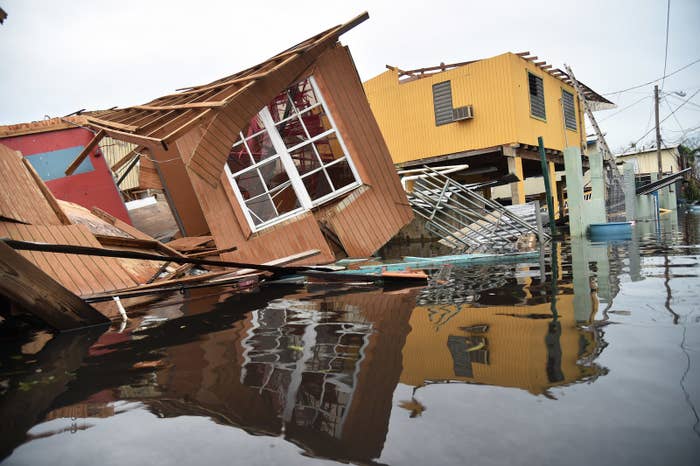
Hurricane Maria tore off roofs and downed power lines in Puerto Rico and the US Virgin Islands this week, triggering a presidential emergency declaration and help from FEMA, the US Coast Guard, and the military.
Now environmental experts are worried about a lesser-known casualty of the storm: more than 30 overflowing landfills on these islands that were posing environmental hazards even before the catastrophe hit.
The successive storms, they say, could cause trash landslides and increase the possibility that toxic liquids are leaching into the soil.
“Everything you can imagine is in these landfills — old cars, asbestos brake liners, petroleum, bottles, cans, yard waste,” Judith Enck, the former EPA administrator who oversaw the agency’s work in Puerto Rico and US Virgin Islands, told BuzzFeed News.
When hit with hard winds and flooding, the chemicals from that trash can wind up in drinking water.
“What happens with landfills is that when it rains, the rain percolates through the landfill and at the bottom there’s a toxic stew that forms,” Enck said. That sludge “will often then migrate into groundwater and into the nearby Caribbean Sea.”
According to a 2016 EPA report, a majority of the 29 landfills in Puerto Rico are over capacity, and since 2007, the EPA has ordered local authorities and landfill operators at 12 locations to make plans to close. But the territory’s budget crisis had hobbled efforts to fix this environmental threat.
Among those is the 51-year-old Toa Alta Municipal Solid Waste Landfill near San Juan, which the EPA has recommended should be closed by the end of this year because it “may present potential threats to human health and the environment.”
The EPA noted that the site sits above the North Coast Limestone aquifer system, which could be a source of drinking water in the future. But it wasn’t adequately protected from the various fluids that percolated through the piles of trash and collected at the bottom.

Three major landfills on the US Virgin Islands have also been struggling to meet EPA standards.
For example, in 2000 the EPA ordered the Virgin Islands Waste Management Authority (VIWMA) to clean up the Bovoni landfill on St. Thomas, after inspections revealed hundreds of vehicle batteries spewing acids into the soil, oil drums leaking, methane burning from decaying soil waste, and various other hazards. Nearby, oozing liquids washed through by rain water were collecting in the Mangrove Lagoon. Then, in 2010, the US Department of Justice sued the VIWMA for failing to implement required fixes at the sites.
With the storm surge brought in by hurricanes, that poisoning of nearby soil and water with toxic fluids could be multiplied.
“If the sanitary landfill does not have enough leachate storage and treatment capacity, it can be overwhelmed by the sudden influx of stormwater,” Nickolas Themelis, director of the Earth Engineering Center at Columbia University, wrote in an email to BuzzFeed News.
If the landfills are not operating according to regulations, like several in the US Caribbean territories, Themelis said, the walls could also collapse, causing “catastrophic” damage to the surroundings.
As of Tuesday, the EPA had not conducted tests around the three major landfill sites in US Virgin Islands. “Our assessments had just begun before we had to pause for Hurricane Maria,” EPA spokesperson Elias Rodriguez wrote in an email to BuzzFeed News. The Virgin Islands Waste Management Authority did not respond to BuzzFeed News requests for comment.
The extent of landfill damage is also unclear in Puerto Rico. The entire territory is without power after Hurricane Maria hit with Category 4 strength on Wednesday, turning roads into rivers and leaving a trail of devastation that could take years to repair. A spokesperson for Puerto Rico Gov. Ricardo Rosselló told BuzzFeed News that 70% of residents are without drinking water. The focus of the response as of Friday is to find and rescue people stranded or trapped by the storm.

At larger landfills, “the biggest hazard is the collapse of the pile,” John Morton, senior urban environmental specialist at the World Bank Group, who works in some Caribbean nations, told BuzzFeed News.
For example, in 2000, rains in Manila catalyzed a disaster at one of the city’s landfills, killing more than 180 people who lived near the dump.
“It destabilized what was already not stabilized and it was more or less a landslide,” Morton said. The sites will also see a larger volume of garbage brought in, as communities clear away all the tons of debris that heavy winds and storms caused.
